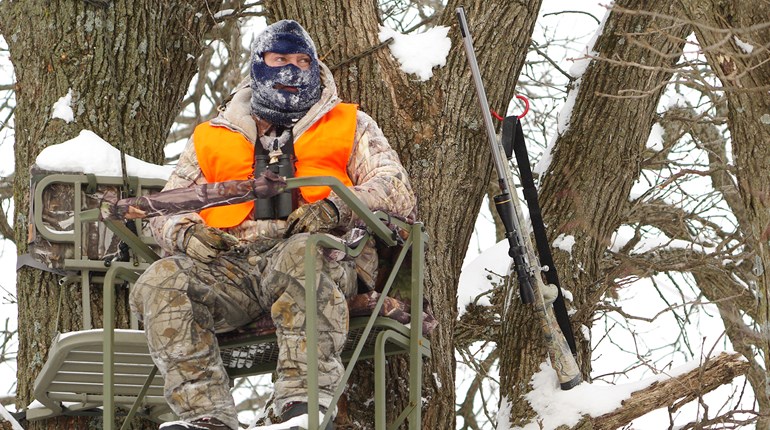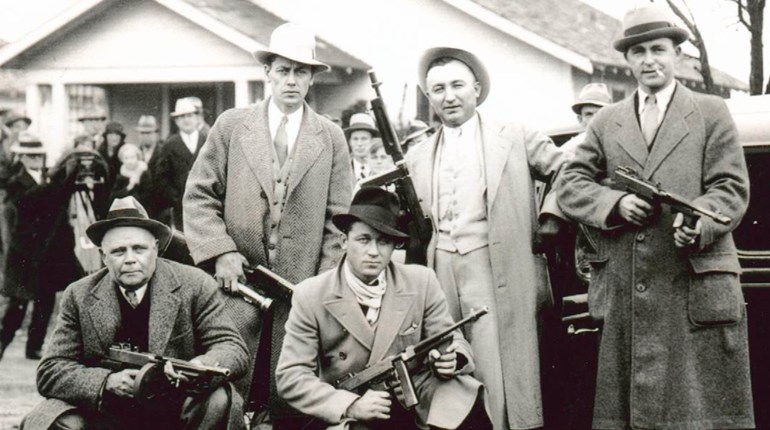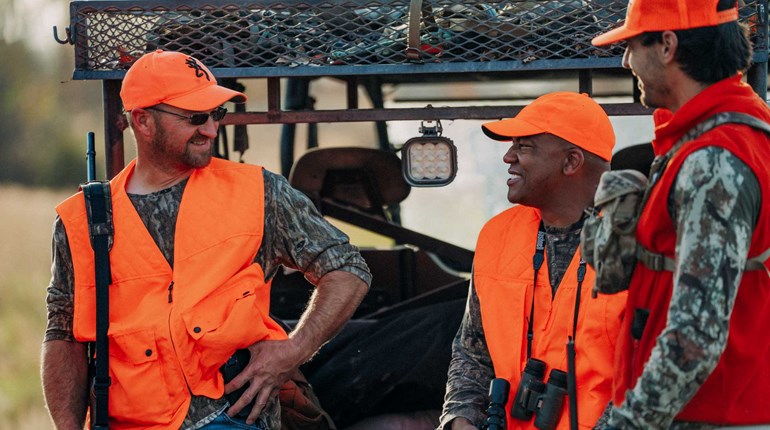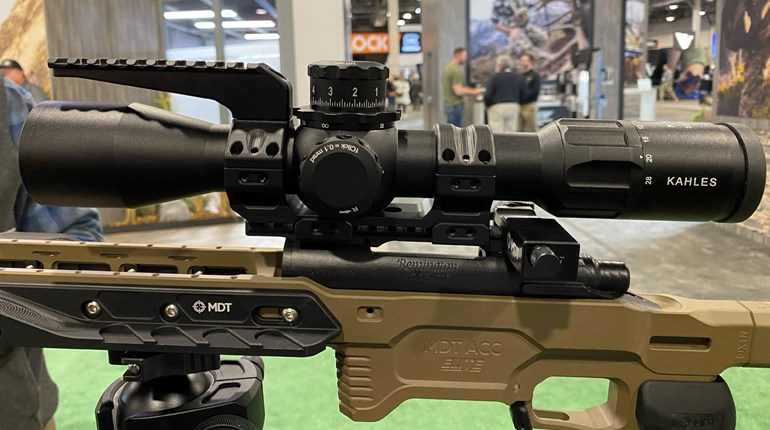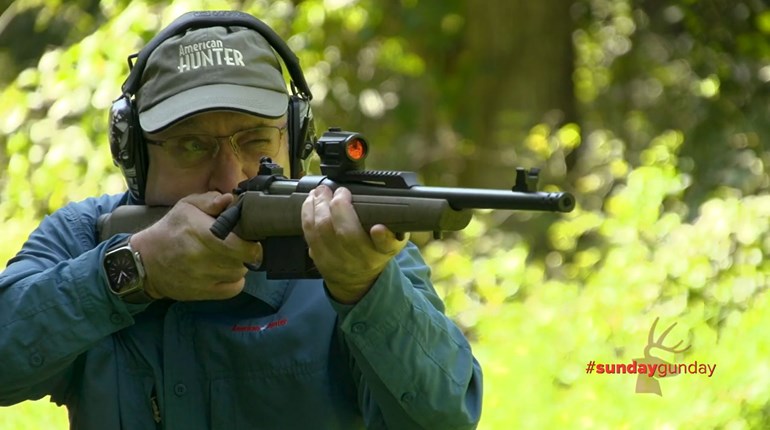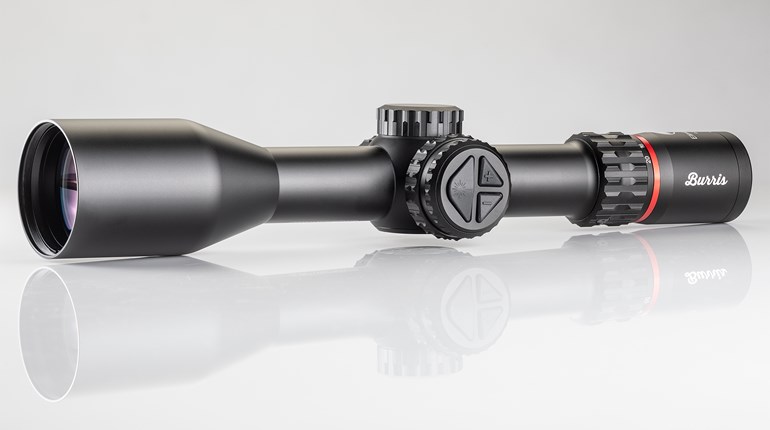
Remember the Bush/Gore election? It was Nov. 7, 2000. I stayed up until I was sure Bush had won. After sleeping two very short hours at that hunting camp, I got up on the 8th to find that maybe he didn’t. It was almost Christmas before the Supreme Court ended the foolishness and we knew who was to be president.
Despite the political turmoil and lack of sleep, I shot my best archery buck that morning; a big, 10-point that scores well into the record book, had I chosen to enter it. It was the last arrow I ever fired at game.
I had been pretty hardcore up until then, hunting multiple states with a bow, shooting almost every day, competing in 3-D tournaments. But I stopped that day. Not sure why, except that I was starting to write more for the NRA and shifted my focus to my first love, guns. My hunting seasons filled up with gun hunts with little room left for archery, and somehow 18 years slipped past without my permission.

I thought about bowhunting, kept promising myself I would start again. I even shot a bit in my back yard but life got in the way. Well, life and gun hunting. Still, when Jordan Egli from Blue Heron Communications called one day and asked if I wanted to do a hunt with the new Burris archery sight in Oklahoma, I took it as divine intervention steering me back to bowhunting. He went on to tell me that it was actually a combo hunt, three days with archery and three days with a rifle. Seeing no hanging chads blocking my way, I jumped on that hunt like a hobo on a hotdog.
Future Sight
One thing that did not appear to have changed with archery is the quest for more arrow speed. I was a bit shocked at the petite arrows and toy-like broadheads being used these days. It’s all in a never-ending search for one more foot per second of speed.
Why? To flatten trajectories. The flatter trajectories help eliminate errors in judging distance. The standard drop due to gravity is a measure of how fast an unsupported object falls to the earth. It is about 32.17405 feet per second/squared. A bullet flying at 3000 fps drops half an inch in the first 50 yards. An arrow flying 300 fps drops 55 inches. Big difference. At 350 fps the arrow drops 39 inches. So, speed helps. But there are limits; arrows only can go so fast. So, it’s critical to know the exact distance to the target and which aiming point on your bow sight to use for that distance. As a sight has a limited number of pins it’s often necessary to hold between two pins, which is less than precise.
Then there is the angle of the shot. The point of impact will change when shooting from a steep angle, such as from a treestand, as compared to level ground. The laws of physics and trigonometry are pretty well established, so none of this has changed from when I was first into bowhunting, or from when Ugg and his posse first used stick bows and stone heads to shoot at their dinner during the Paleolithic period 71,000 years ago. Sure the bows today are faster, but not that much faster. Not fast enough to defeat gravity, anyway.
That’s where the Burris Oracle bow sight steps in. It measures the exact distance to the target with a laser rangefinder. Then it lights up the exact aiming point needed for that distance. The sight is tuned to your bow and arrows precisely so that calculations are tack on. As long as you execute the shot correctly, the arrow will strike the target.

Setting up the Oracle is, of course, critical. After installing it, you must insert the supplied laser into the front of the sight. Then the sight is adjusted using a laser target. The supplied target has a point of aim and a point where the laser should show. So you aim at one spot and adjust until the laser is on the other, 2.5 inches to the right. While this is the only way the sight can work on a bow, I found it to be the most difficult part of the process. It’s hard to hold on an exact point of aim and keep the bow still at full draw.
After that the laser is removed. That’s because it is illegal to use a visible laser sight for hunting in many places.
The sight is calibrated by shooting at 30 yards and at another distance at least 40 yards from the target. By calibrating it as instructed, the sight can calculate the arrow’s trajectory and will light up the correct aiming point for any distance out to the physical limits of the sight. The sight automatically calculates for shot angle as well as the distance.
After carefully adjusting the Oracle, I tested it on my range. I was easily making center hits out to 60 yards, which is as far as I can shoot on my property.
No doubt there will be the inevitable arguments that we are relying too much on technology, just as there were with compound bows, carbon arrows and handheld rangefinders. The truth is simply that instead of ranging the distance and calculating the hold in our heads, the sight does it for us. Is that so different?
If it helps eliminate wounding loss and makes us more efficient hunters, what’s the issue? I know it made me a lot more confident while hunting.
Bad Timing
The bag limits were generous on this hunt, a buck and a doe each with a bow and rifle. Also, all the pigs we could shoot.
I was seeing lots of deer, but they were all introverted and uncooperative. I drew only once and that led to the discovery that the ground blind I was in was much too low for archery hunting. The bow hit the roof, and with all my gymnastics trying to point an arrow out the window the spooky doe fled the scene. At my request, I was in a treestand on the last day of the bow hunt.
A bunch of deer came in while it was still too dark to see anything other than shadows against the lighter patches of grass. As it grew lighter I confirmed my suspicions that they were all does. They stuck around, feeding, so I waited over an hour, hoping their boyfriend would show up. Adult bucks had been scarce and the trend continued with the morning remaining antler-free.
Due to major surgery and a less than perfect outcome, 2017 marked the first year in more than three decades that I didn’t shoot a whitetail. The greater tragedy was that for the first time in at least that long, my freezer was venison-free. I decided that in 2018, a sleek Oklahoma doe would do nicely to remedy the sad situation.
The shot was only about 20 yards and the arrow hit exactly where I wanted, centering the heart. The deer all ran off, but I could see all but one waiting in a small clearing at the top of the hill about 250 yards from me, so I knew she was down.

I waited in that stand for two more hours until nature reminded me about the rented coffee yearning to be set free. I found the blood trail and followed it an amazing 200 yards where the deer waited. I left her and attended to my demanding needs.
I finished my business and walked back to the deer, thinking I might snap a photo or two. As has been the trend for all of my life, my timing sucked. I looked back down the hill and standing right in front of my stand was a nice 8-point buck.
This part of Oklahoma is pretty open country, and there was one tree between me and the deer. By using it for cover I managed to close the gap until I was standing behind the tree. It was 35 yards, a bit farther than I would have liked, but I had been practicing every day out to 60 yards on my backyard range, so it should have been a done deal.
I drew, stepped around the tree and carefully executed the shot. That buck never knew I was there, until the arrow flew 2 inches over his back. Somehow, I had ranged the trees behind the buck, proving that no technology is completely idiot-proof.
I wish I could tell you this sad story ends here, but my mother used a wooden spoon to ingrain honesty into my soul and the lesson took.
I quietly climbed back into my stand, feeling like a damned fool and remembering that bowhunting had often instilled that response over the years. Twenty minutes later I could see that same buck circling the stand at about 200 yards. I grunted at him and he came back like he was on a retractable leash.
The buck was broadside at 15 yards when I drew. As soon as I hit my anchor point he turned his backside to me.
I held at full draw while centuries came and went; empires rose and fell; tectonic plates crashed and mountains rose and then slowly eroded away. Time lost all meaning as it slowly drained my strength and turned me into a quivering Jell-O shot. I wish I could tell you it ended well, but again, it’s that lying thing.
I know, I know, I should have let the bow down and waited, but the buck was so close I didn’t think I could do that undetected. Trust me, I have spent many sleepless nights Monday-morning-quarterbacking, and I don’t even like football.
So, as could have been predicted, my reentry into bowhunting was bittersweet. I was happy for the success with the doe and angry with myself about the buck. It was déjà vu all over again as I had visited those emotions often during my previous multi-decade bowhunting career. It was good to be back.
Future Scope
It’s amazing how much difference a couple of days can make. The best buck I had seen in three days of bowhunting was that 2½-year-old 8-point. Rifle season opened two days later and the first morning I had good bucks all over the place. I passed on several small bucks and had seen a giant briefly skylined in the distance. Another tempting buck showed up shortly after daylight and hung around almost long enough for me to talk myself into shooting him. Before that happened, a much bigger buck came out at full charge and hit a doe that was in front of my blind. All the deer, including the first buck, wadded up and ran up the hill in front of me like a giant ball of deer. The buck that assaulted the doe was a shooter for sure and needed to account for his sins, but I never had an opportunity with all the other deer running interference for him.

An hour later a doe emerged from where the deer had gone and walked down an abandoned ranch road. It was one of those things you just know is going to happen, so I was not surprised when a few minutes later a very nice 10-point buck exited the thick woods and came down the same road. When he stopped 100 yards from me, I filled my rifle buck tag.
I was using the new Franchi Momentum rifle, chambered, of course, for the 6.5 Creedmoor. It’s the only cartridge currently allowed by law on writer hunts. The rifle is impressively accurate and it will shoot tiny groups with Hornady Precision Hunter 143-grain ELD-X ammo. I shot the buck, a doe and a hog, and it was one and done with all of them. It’s hard to argue with that kind of success.

The rifle was fitted with the Burris Eliminator III LaserScope. Burris has had this family of riflescopes for a while and it may well have been the inspiration for the Oracle. It’s the same idea, only for guns. The shooter plugs in the info, zeros at 100 yards and fine-tunes at long range.
Once done, the laser rangefinder judges the distance and then, based on ballistic data stored in the electronic brain of the scope, the Eliminator lights up the correct holding point for the distance to the target. I was hitting targets out to 750 yards with ease at the range the day before the gun hunt. I have shot with the scope on my range quite a bit after returning home and it makes long-range hits easy.

Again, the scope just does what I would do: measure the range and calculate the hold. Only it’s not subject to human emotion, which can lead to errors when a big deer is making it hard to breathe or think or do anything else. Many of today’s hunters are going to take longer shots whether we like it or not, this just helps them not mess them up. What’s wrong with that?
My longest shot on game during this trip was the 100-yard buck, so I didn’t need the scope’s amazing technology, but in that wide-open country, I could have.
Isn’t that the point?
Gearing Up
My first order of business was my gear. My bow was cutting edge … two decades ago. It was like the Hale-Bopp comet or Spice Girls of bows, flying bright in 1997, but today it just evokes blank stares. I needed an upgrade.
I had used a lot of different bows back when I was writing about bowhunting, but the one that had accounted for the most game, including that last buck, was a PSE. So, that’s where I went looking for a replacement.
We men like to think time has no effect on our powers. Back in the day I had a bow with an 85-pound draw weight I used for targets. I hunted regularly with a 70-pound bow. But, when I tried to pull that old hunting bow, it must have rusted shut. So, I ordered a 60-pound PSE Response compound bow. It, of course, has the adjustment range to go back to 70 pounds, if my youth ever returns.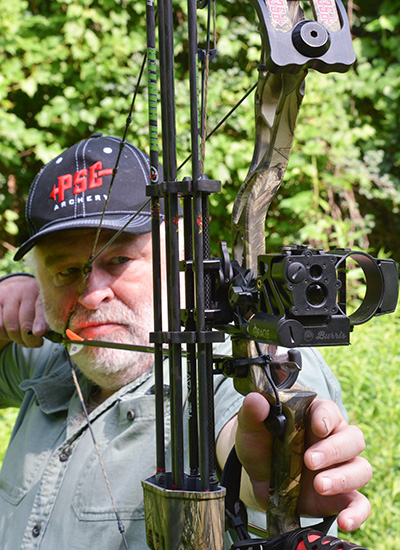
The Response is in the Pro line. It has the PSE Evolve Cam System and yet it is very affordable at $799.99. It weighs just 3.9 pounds and is axle-to-axle just 33 inches long. I added a PSE stabilizer, arrow rest and quiver. In just a few practice sessions I was back shooting (almost) as well as the old days.
My bow press is an antique and not suitable, so I took the bow to Marty’s Sporting Goods and Gunsmithing in Bennington, Vt. Marty did an excellent job of getting this new bow ready for me.
I added a few Rage broadheads and a Block target and I was ready to hunt.
Somebody once said about my old and very large, aluminum, double bow case: “If the plane crashes, all they will find is the black box and that bow case. In fact, that case is probably why it will crash.”
Unfortunately, the airlines won’t take it now because it’s so big and they are not as nice as they were 20 years ago. Still, a bow case is extremely important as it protects your hunting bow from the airline baggage handlers who are all highly trained experts in mayhem.
I ordered a SKB iSeries 4214 Bow Case. This compact, waterproof case protects my bow and a dozen PSE HD Hunter arrows from weather, water and baggage handlers. Unlike my old case, it’s small enough that one man can carry it easily. I equipped the case with two rather expensive TSA locks, one of which they liked so much they kept.












